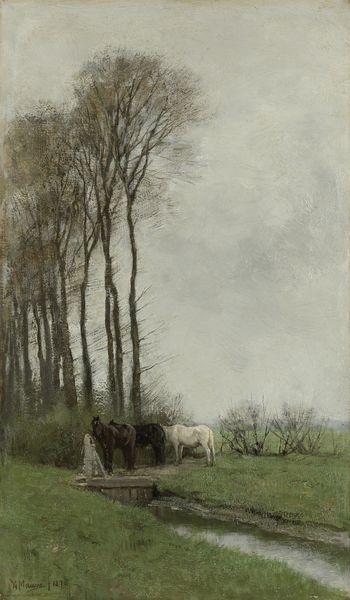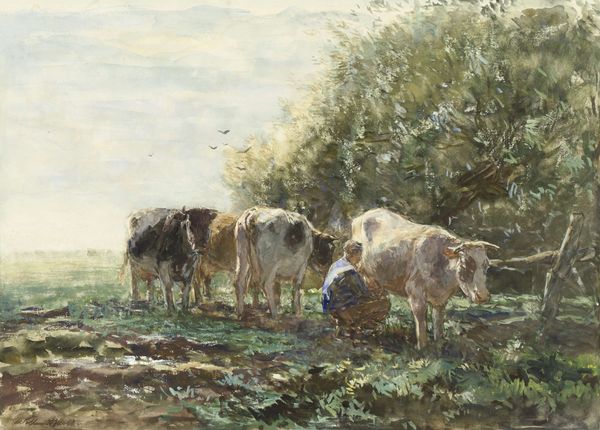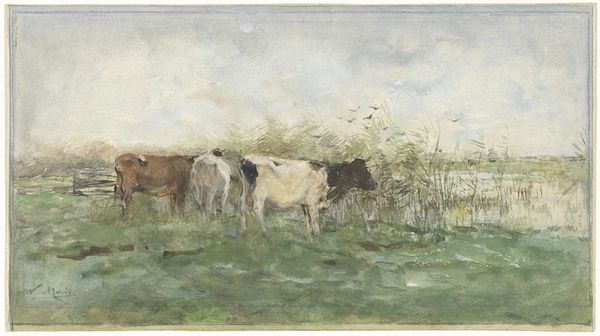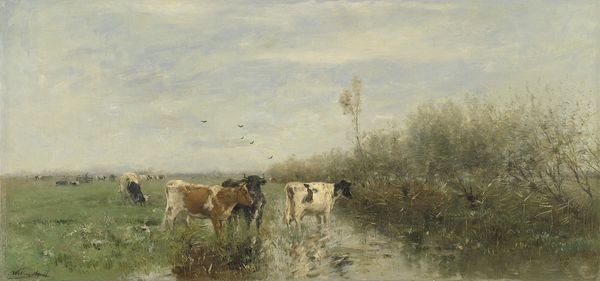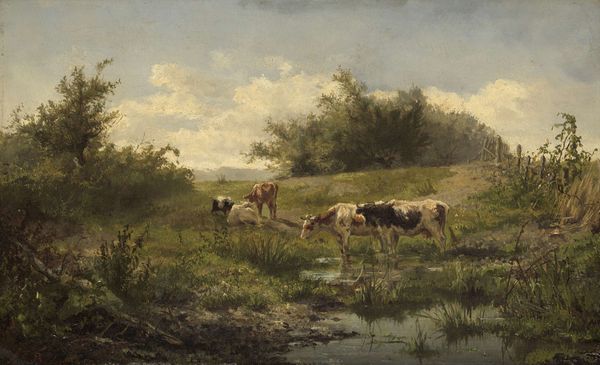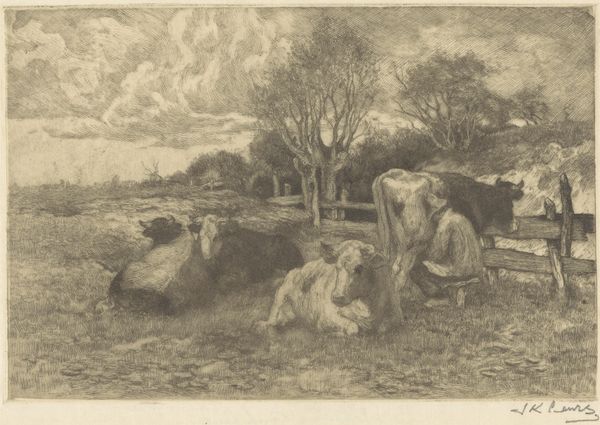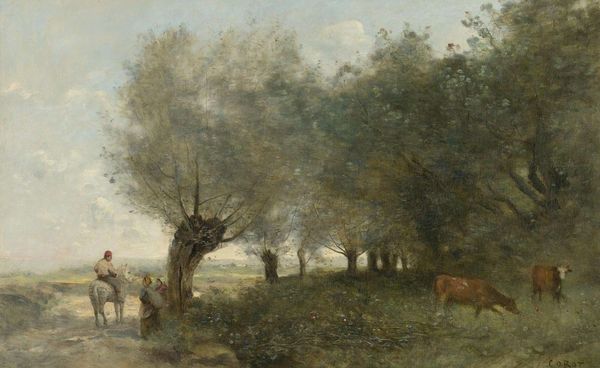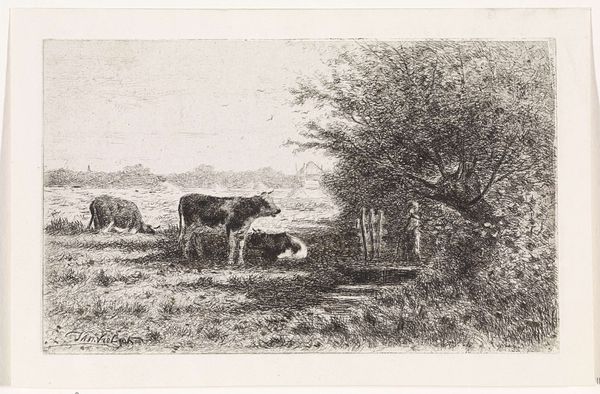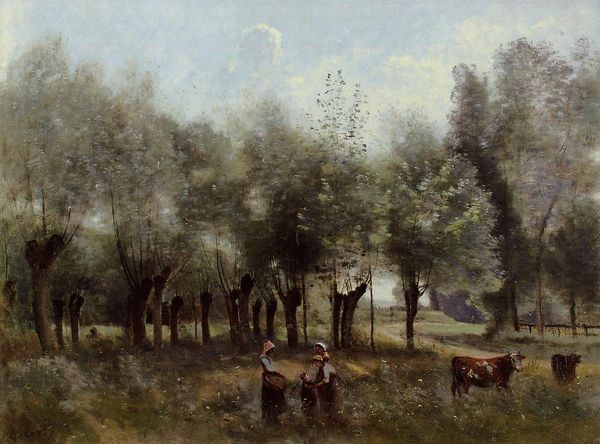
Dimensions: height 136 mm, width 163 mm
Copyright: Rijks Museum: Open Domain
Curator: Looking at this watercolour work, "Herder en herderin met hun kudde rustend bij water" from the 18th century, displayed here at the Rijksmuseum, one immediately perceives a rather tranquil and subdued pastoral scene. Editor: Indeed, it's all quite soft, isn't it? The muted tones give a very peaceful impression, like a half-remembered dream of rural life. I find my eyes drawn to the cow, rendered with what seems like a very deliberate lack of sentimentality. Curator: That "lack of sentimentality" I think resonates with how we consider gender and labour at this historical juncture. How does it echo a specific societal structure where labor, even within the pastoral ideal, is intricately gendered and perhaps reflects constraints placed on women as part of that rural labor? Editor: You're right to draw attention to that—this is, after all, labour being performed. The act of milking, the care of livestock, and how these were viewed through the lens of value—the production of sustenance reduced down to repetitive material action. One might consider the value ascribed, then and now, to the unseen efforts required for everyday life. Curator: Precisely! This painting then is also speaking to ideas around Romanticism but through a gendered labour lens. The scene hints to the socio-economic reality of 18th-century life while romanticizing the idea of the 'good life'. Editor: The material reality stands out; it challenges a purely aesthetic or romantic reading. Looking closely, I think it subtly reveals its construction. Watercolor on paper - how the artist manipulates the wet pigment, that delicate dance of control and chance... I keep wondering about their choice of this medium and its relative affordability for rendering scenes like these. Curator: The use of watercolour complicates this landscape by pointing towards the performativity of its idealized romantic landscape, while subtly underlining the gendered and classed construction of idealized rural existence of the era. The scene invites one to see through this prism, asking one to critique it even whilst admiring the scene. Editor: An act of material rendering turned interrogation, in a way. Curator: Exactly! A reminder that even quiet landscapes engage with complex issues about those who toil within those seemingly silent spaces. Editor: And for me, an ongoing invitation to reconsider what makes the labor and skill to manufacture a scene like this worthy of display, and its role as document of the human-animal bond within that agricultural era.
Comments
No comments
Be the first to comment and join the conversation on the ultimate creative platform.
